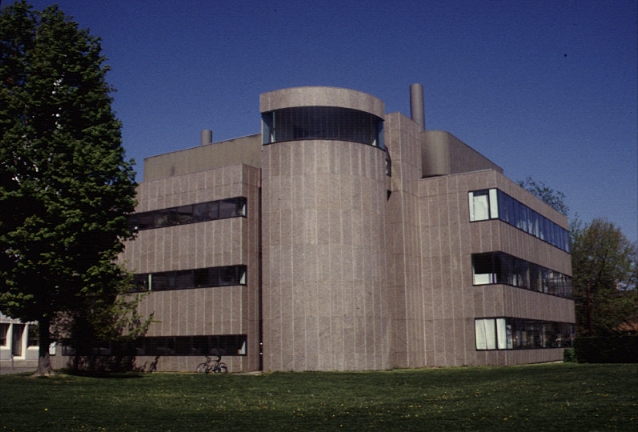Hoyt Laboratory

Princeton University. Property of the Trustees of Princeton University.
Source: Christine Kitto-Princeton University

Princeton University. Property of the Trustees of Princeton University.
Source: Christine Kitto-Princeton University
The University could not do much in the short term to tackle these challenges. Throughout the recessionary 1970s, building activity came to a near standstill on the Princeton campus as the University struggled with the economic dislocations of stagflation and the energy crisis. Other than the Hoyt Laboratory, built for the biochemistry program in 1977, more than a decade passed without significant new construction.
While waiting for better times, the University worked to develop an integrated approach to managing its future growth. Student life was a top priority. The enduring problems of the eating clubs, overcrowding, and limited social opportunities for underclassmen had not gone away. In addition, the campus was unbalanced, with dining facilities concentrated in the Commons complex in the northwest corner of campus and increasing numbers of students living in the new dormitories, a 20-minute uphill walk away.
These considerations aside, Princeton also entered the Bowen era facing a potentially staggering maintenance bill. Many of the buildings erected during Princeton's great Collegiate Gothic phase were beginning to show their age. Major plumbing and electrical systems needed upgrading; asbestos had to be removed; and stringent new fire codes had to be met. From an institutional perspective, these anticipated costs were worrisome indeed: donors are often eager to underwrite new construction, while money for renovations is among the hardest to raise.
President Bowen's solution to this dilemma was Wu Hall and the adoption of the residential college system that it represented. The product of the Committee on Undergraduate Residential Life, or CURL, this initiative grouped underclassmen into five separate "residential colleges," each a cluster of dormitories adjacent to a dining hall with a dedicated set of social and academic facilities. Despite the failure of part of the CURL program, which would have brought the eating clubs into the University's orbit, this process still marks a revolution in undergraduate life at Princeton.
In any event, the shift to the residential college system neatly solved three related problems. First, it proved a brilliant means of securing funding for overhauling the aging Gothic dorms and dining halls. Donors were enthusiastic about funding the renovations required to create residential colleges. Second, it provided the context for building an additional and much-needed dining hall, to be located at the south end of campus near the new dormitories. And third, it provided a focal point for the $410 million "Campaign for Princeton."